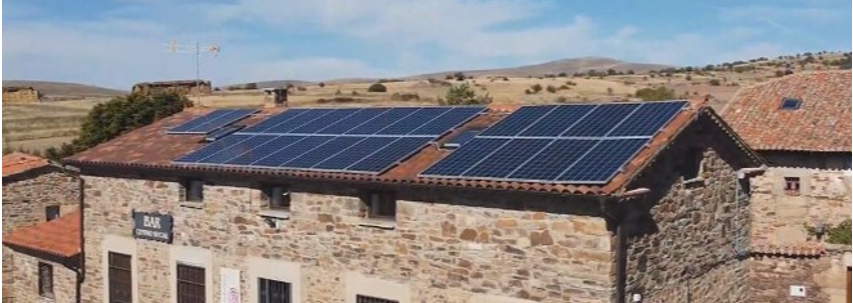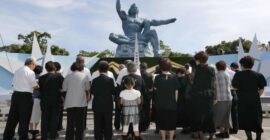Villages of Teruel, Soria or Ciudad Real seek to revitalize and fight against the depopulation that they have suffered for years. Its inhabitants have mobilized to achieve energy self-consumption with renewable energy facilities, but they also seek to promote the economic development of these rural areas through the creation of so-called energy communities, a highly developed formula in northern Europe. In Germany there are more than 1,500 villages and in Denmark 700.
It is a good solution to fight against the so-called emptied Spain. Because energy communities promote citizen participation, revitalize rural areas, promote a sense of community, stimulate collaboration between citizens and companies, develop economic activity, promote twinning between neighboring villages, encourage people to settle down to their land, they facilitate their relationship with the environment, raise awareness about the transition to clean energy and reduce the energy costs of members.
Citizens, associations, neighboring villages, small and medium-sized companies or public administrations come together to be independent in the energy field. In Spain they are beginning to be developed and the Government has announced aid of 100 million to boost energy communities. Let’s look at five of these initiatives.
1.Castilfrío de la Sierra was the first village to set up a rural energy community. This small town in Soria -with just 40 inhabitants is a clear example of emptied Spain- has placed photovoltaic solar panels on municipal buildings to supply electricity to part of the village.
The neighborhood association in charge of managing this self-consumption initiative has become an example to imitate within the Tierras Altas area, to which Castilfrío belongs, and there are already twenty municipalities in the surrounding area that want to launch similar projects.
2. Luco de Jiloca is a beautiful Village in Teruel located in the fertile plain of the Jiloca River and which is part of the Camino del Cid tourist-cultural route. Most of the 60 inhabitants of the municipality have started a crowdfunding with the aim of installing a solar farm in the town itself that will supply energy to the houses of the neighbors and the municipal buildings.
“In addition to energy self-sufficiency, we want to promote the pride of living in the land in which we live, enable the generation of new employment and thereby attract a new population that is willing to settle here”, comment its promoters. The objective of the crowdfunding is to reach 3,000 euros of financing, which would be added to the personal funds of each neighbor already invested in the solar farm.
3. Ballesteros de Calatrava also wants to dissociate himself from the electricity companies through energy self-supply. The residents of this Village in Ciudad Real, with 400 inhabitants, have come together to create a renewable energy trading company and build a photovoltaic plant. Ballesteros Genera -which is the name of the project- will produce, store and distribute electricity throughout the village.
The initial cost is 338,000 euros, although 138,000 euros of them come from European funds. In the first year of operation, the electricity bill will be reduced by 20% and in subsequent years the discount will increase until the cost is reduced by 80%.
4. Aljarafe-Doñana is a development group made up of 16 Sevillian municipalities that have come together to create zonal energy communities. The association is looking for properties that can house large solar panel installations with which not only the owner of the building can be self-sufficient, but also neighbors and companies located within a radius of 500 meters or that can use the same transformer to which the excess energy is poured.
Aljarafe-Doñana calculates that the investment required for an installation is about a thousand euros per kilowatt of power and that it can be amortized in 5 years, given that the estimated savings are between 35% and 40%.
5. Crevillente has the most ambitious project, which has made it a European benchmark, and in fact, in this town of Alicante, the First National Congress of Energy Communities will be held in the spring of 2022. The first installation of the four planned, consists of a 600-square-meter roof of solar modules that will cover 50% of the needs of the residents of the Crevillente district of El Realengo. The next step is to use 15,000 square meters of 21 buildings on which photovoltaic panels will be installed, and then continue to grow until in 2030 the entire population of Crevillente benefits from self-sufficiency.
These five initiatives reflect the momentum that energy communities are beginning to have throughout Spain, which are configured as a magnificent formula to revitalize disadvantaged areas.



